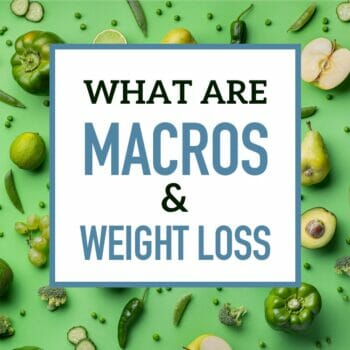How Much Fiber Should We Eat When Counting Macros?
The term macronutrient (macro) refers to three nutrients that our bodies need in relatively large amounts: carbohydrates, proteins, and fats.
Fiber, while crucial to health, is typically considered a type of carbohydrate. However, some experts believe fiber should be considered the fourth macronutrient.
Fiber has distinct health benefits and behaves differently in the body compared to other carbohydrates.
Fiber isn’t fully digested and absorbed in the small intestine like other carbohydrates, but instead, it provides benefits like promoting a healthy gut microbiome, aiding in digestion, and promoting feelings of fullness.
🥦 In other words: Fiber is good.
What should my fiber macros be?
Rather than a fixed number, the amount of fiber should be based on your daily calories.
The formula I use is 14g of fiber per 1,000 calories consumed.
Example
For a 195 lb male with a daily calorie target of 2,730 calories.
You’d multiply 14 (fiber) x 2.73 (2,730 ➗ 1,000 calories), which equals 38.
So your final macros, including fiber, could be 195 g protein, 76 g fat, 317 g carbohydrate, and 38 g fiber.
The only caveat to the formula above is for smaller, lighter individuals. Aim to have at least 25 grams of fiber daily for good bowel health, so if the formula puts you under that, default to 25 grams.
Note that you can eat a lot of healthy vegetables and fruit and still not get a lot of fiber. Leafy vegetables like lettuce and many other green veggies have low fiber amounts per volume.
If eat a lot of vegetables but still have trouble getting enough fiber, it’s ok to supplement with a natural fiber like psyllium husk.
The types of fiber
Soluble Fiber 🍎
Dissolves in water. As it passes through the digestive tract, it changes and is fermented by bacteria. By absorbing water, it softens and aids in the movement of waste within your body.
Sources: Fruits, vegetables, lentils, peas, beans, oats, barley, oatmeal, potatoes, and dried fruit.
Insoluble Fiber 🌾
Doesn’t dissolve in water. As it goes through your digestive tract, it doesn’t change form.
Sources: Bran, wholemeal flour and bread, brown rice, whole grain cereals, vegetables, edible fruit peels, nuts, and seeds.
How much fiber per protein?
Diets that are higher in protein can have an unintended consequence: constipation.
Foods that are high in protein are typically very low in fiber.
There is no fixed recommendation on the number of fiber grams per protein grams. However, if you are on a high protein diet, you should increase fiber grams: this means more than 14 g per 1,000 calories.
When counting macros, do you subtract fiber from carbs?
If you’re tracking macros, you might want to track net carbs instead of total carbs.
Net carbs are the carbohydrates in a food that can be digested and absorbed by the body.
Because fiber doesn’t provide energy, counting it as a macro is unnecessary. However, nutrition labels include fiber in their total carb count – so for beginners, it’s much easier to count total carbs. There’s math involved in subtracting off fiber grams, which can be too much of a hassle.
So, if you start counting macros, don’t bother subtracting the fiber. If you are advanced, then you might want to try tracking net carbs


 How to track macros with Cronometer
How to track macros with Cronometer What Are The Best Macros For Weight Loss?
What Are The Best Macros For Weight Loss? How To Count Macros on a Vegan, Vegetarian, or Plant-Based Diet
How To Count Macros on a Vegan, Vegetarian, or Plant-Based Diet Out of a Macro For the Day? Here’s What to Eat
Out of a Macro For the Day? Here’s What to Eat Macros for Gaining Muscle and Cutting Fat
Macros for Gaining Muscle and Cutting Fat